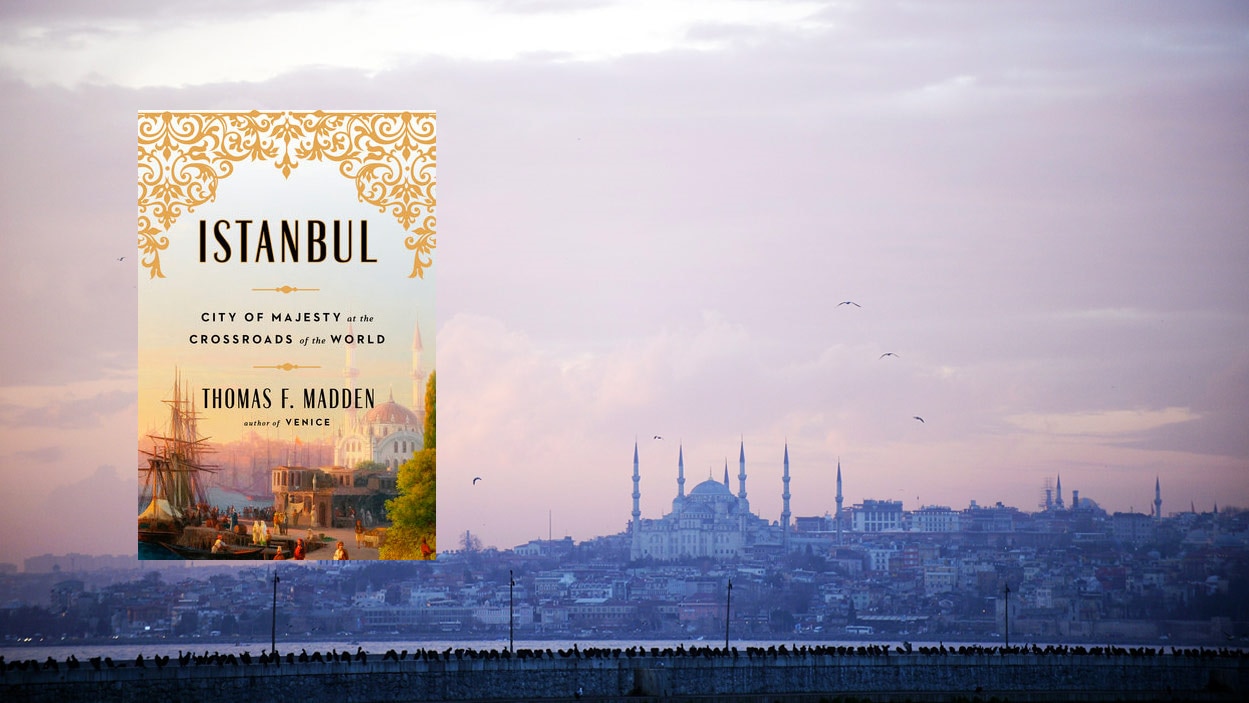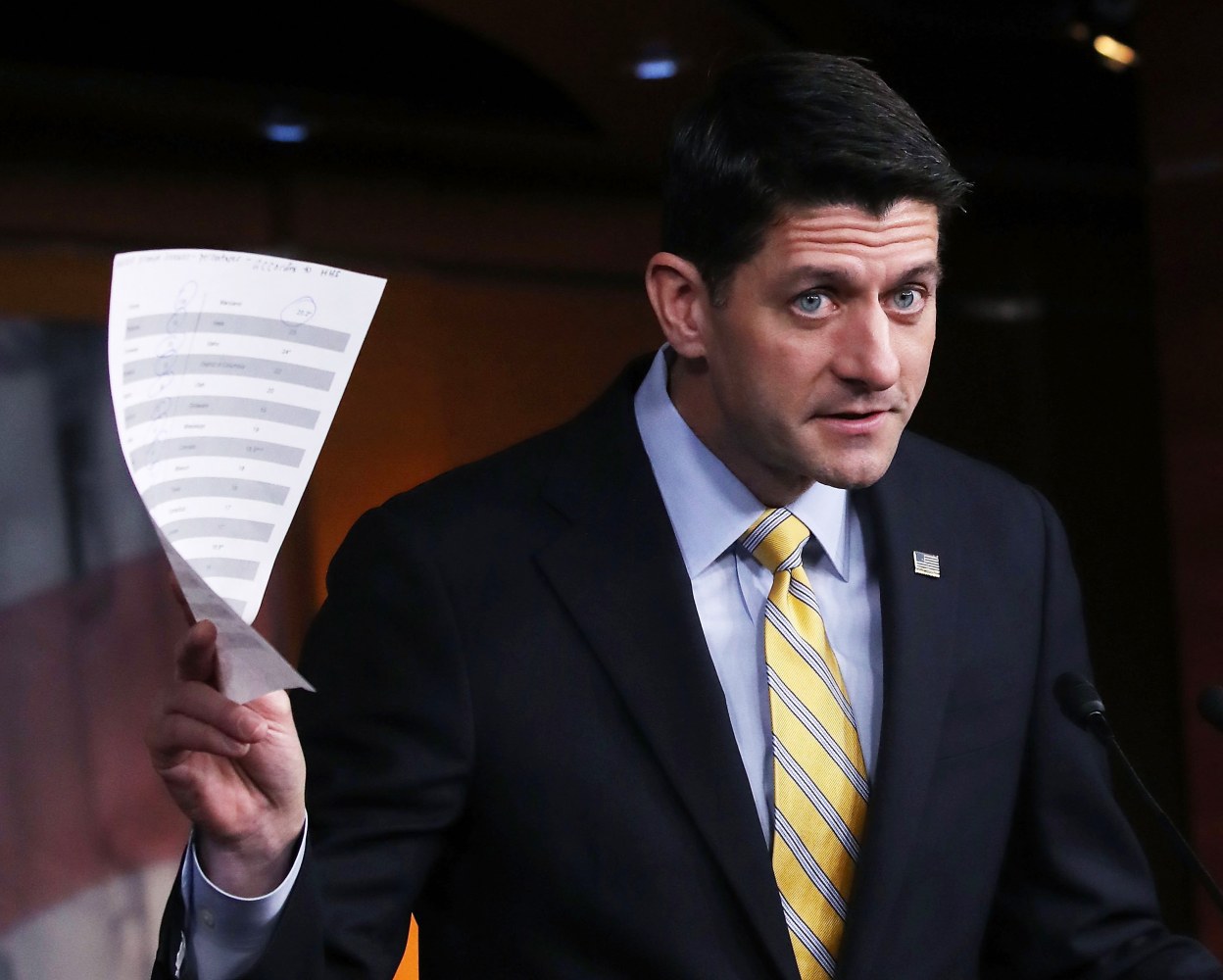A Megacity Old and New
Istanbul: City of Majesty at the Crossroads of the World, by Thomas F. Madden (Viking, 400 pp., $32)
Historian Thomas F. Madden begins his story in 667 b.c. or thereabouts, when, legend has it, Megaran colonists under the command of King Byzas sailed from the Bosporus into the world’s largest natural harbor, an estuary they were to call the Golden Horn. They were ravished by their discovery: There was a verdant peninsula from which Asia and Europe could be seen, with natural defenses of hills and water. The promontory allowed them to survey and dominate the strait that linked two continents and the Black and Mediterranean Seas. The climate was temperate, the water so abundant with fish they could catch them with their hands. Just beyond was the fertile soil of Thrace. It was the ideal site for a trading city.
Byzantium has been known by at least ten other names. (“Istanbul” is a Turkish corruption of the Greek for “to or of the city,” in the local dialect — with the p in “polis” pronounced as a b.) The Megarans could not have imagined their city’s future. In 1203, a dumbfounded Crusader, Robert de Clari, tried to describe the size and splendor of Constantinople and its treasures to Western audiences but at last gave up: “If anyone should recount to you the hundredth part of the richness and the beauty and the nobility that was found . . . in the city, it would seem like a lie and you would not believe it.”
Istanbul remains a city beyond superlatives and beyond Westerners’ imaginations: ancient and modern, magnificent and mad in equal measure. The ghosts of marauding Crusaders, marching janissaries, and conspiratorial Young Turks still haunt its soot-streaked alleyways. Everywhere, writes Madden, there is evidence of the city’s prior incarnations as “a den of debauchery, a city of saints, a smoldering ruin, and a glistening capital of two empires.” But unlike Venice, the subject of one of Madden’s previous books, Istanbul is not an urban museum. It is rather a cacophonous megacity. The Bosporus is still the world’s most critical maritime artery; and construction noise, car horns, and the shouts of street hawkers play a constant counterpoint to the call of the muezzin.
The city’s history long antedates Byzantium, in fact. I was there throughout most of the drama of the construction of its $4 billion subway beneath the Bosporus. In 2005 (to the abject horror of the city’s budget planners), engineers discovered, beneath the proposed main transit station, the lost, a.d. fourth century Byzantine port of Theodosius. The project screeched to a halt while platoons of excited archaeologists descended upon it. They then unearthed 8,000-year-old clothes, urns, ashes, and utensils, forcing historians to completely revise their understanding of the city’s age and origins. The subway was not completed until 2014. Discoveries such as these pose terrible dilemmas to archaeologists: Excavating the top layer can damage the one below it, and vice versa. So which of the many cities below the surface should be conserved? (And how can any of them be made safe from President Recep Tayyip Erdogan and the army of commercial developers who, with basically the same motives as the Megaran colonists, long to replace it all with high-rises, neo-Ottoman kitsch, and multistory parking lots?)
Madden is a medieval and Renaissance historian. The history of Istanbul is his vehicle for telling many other stories: those of antiquity, of the doomed Byzantine Empire, of Christianity and Islam, of trade throughout the ages, of warfare, and of the many empires of the Mediterranean and the Middle East. His use of a single city as the narrative device by which he recounts these overlapping histories works remarkably well, and surely no city could be more fit for the use of this conceit. If Istanbul’s unique blessing is its geography, which makes it a natural crossroads for trade, this is also its curse: It is an irresistible target for conquest, and conquered it was, by most every empire in history — from the Macedonians to the Romans, Persians, Avars, Arabs, Russians, and even Hungarians, and then finally the Ottomans.
Condensing Istanbul’s history in a single volume is a daunting challenge; the book is a great success, and one with no lack of drama. Madden evokes vividly, for example, the horror of the winter of a.d. 196, when, under siege by Roman forces, Byzantines succumbed to disease and starvation, eating corpses and fleeing in desperation by sea on overloaded boats that quickly sank, capsized in the storm or rammed by Roman galleys. As Madden explains, historians are unsure why the Byzantines resisted so fiercely: No one else did. When at last they surrendered, the surviving soldiers and officials were executed and the rest of the people lost their property; many of them were sold into slavery. (How brutal was the ancient world — and how strangely like our own, with Aleppo under siege, desperate refugees drowning in the Mediterranean, and the vanquished executed and sold into slavery.)
The city was renamed Antoniniana, after the emperor’s son. Madden’s brief history of Rome — told in support of the central narrative — is surprisingly clear. I would not have thought it could be so compressed without becoming gibberish.
Madden tells the stories of all of Istanbul’s incarnations skillfully, but he runs out of energy in 1453. After the Muslim conquest, he races toward the end (and who could blame him; Istanbul’s is a long history). He might argue that in the big scheme of things, the Ottoman and Turkish Republican periods are short chapters of Istanbul’s history — and he would be right — but only in these last chapters does the book feel rushed. He describes the Ottomans as vividly as he does the city’s earlier inhabitants (his treatment of the Sultanate of Women is particularly interesting), but given their significance, he might have dwelled longer on them with profit.
The book could also have done with footnotes. There is little by way of scholarly apparatus, presumably because an editor insisted that it would doom the book’s commercial prospects, but this is regrettable. One trusts Madden’s scholarship — he is highly regarded among medievalists — but curious readers naturally want to know how, exactly, we know what he tells us. Even a few judicious notes, or an annotated bibliography of the kind he furnished in his Concise History of the Crusades, would have gone a long way. Better proofreading would also have done him no harm; the inconsistent Turkish transliterations are annoying.
But these are quibbles. Madden is especially good when he tells us what the city looked like in its different incarnations. I had had no sense, for example, of what I might have seen had I walked down one of the main streets of Constantinople, having seen only the ruins, which smell of moss, decay, and damp. It had never occurred to me to imagine the streets “flanked with long rows of monumental columns, stretching two stories in the air and topped by ornate wooden roofs to keep out the sun and rain.” These were lavishly decorated with statues, fountains, and bright tapestries, we learn; they were not avenues, but forums that stretched on for miles, designed to be the centers of civic life.
The book is, inescapably, elegiac. Like all the port cities of the eastern Mediterranean, Istanbul’s is now a story of vanished cosmopolitanism. The end of the Ottoman Empire, and its replacement by the nationalist successor states, has mostly been a tragedy; and Istanbul itself is now heavy with an omnipresent sense of ancient eclipsed glory.
If Istanbul’s vanished cosmopolitanism is a tragedy, so too is ours. From the publicist’s blurb that accompanies the book: “Given the recent terror attacks in highly touristed parts of Turkey’s capital,” it says, it is “critically important to understand the complex history of one of the world’s most important cities.” Could any commendation be more solipsistic? Would it otherwise be unimportant to understand this history? It is dismaying to imagine readers so dull-witted that terrorists must be invoked to compel their curiosity about the city that was Byzantium, Constantinople, New Rome, and the seat of the Ottoman Empire.
Madden is not to be blamed for his publicist, of course. To the contrary, the careful reader will, indeed, learn much in this book about the fate of incurious and self-absorbed empires. Even the careless reader will be much enlightened by the book, as good an introduction to Istanbul and its splendors as one could hope to have.
– Claire Berlinski is the author of Menace in Europe: Why the Continent’s Crisis Is America’s, Too. She is now crowdfunding a new book about Europe titled “Brave Old World.”



